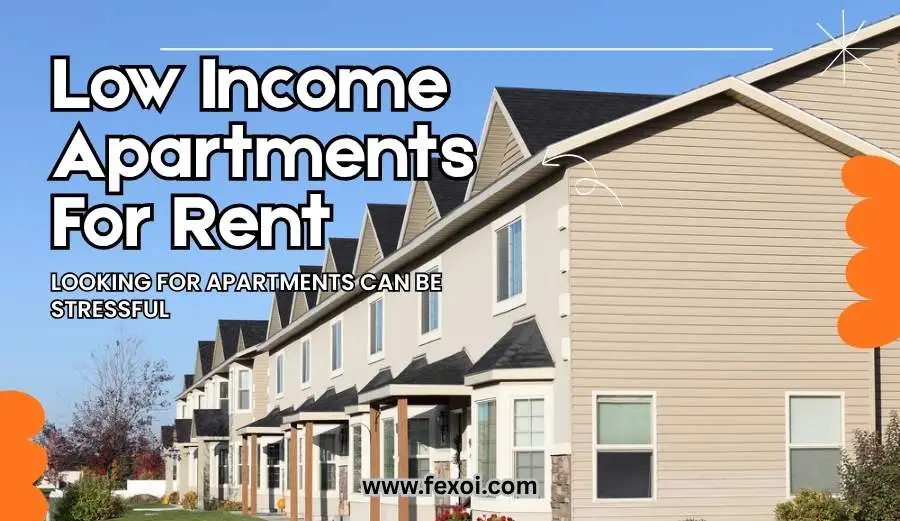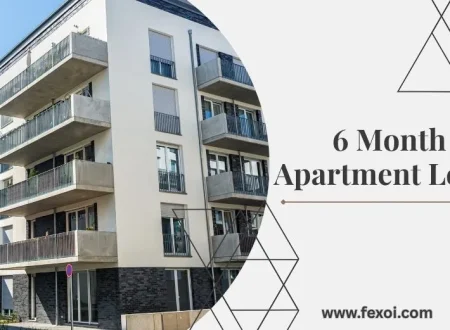Looking for low income apartments for rent can be stressful, especially when your budget is tight and the demand is high. With rising rent prices across many cities, finding affordable homes that match your financial situation requires patience, knowledge, and the right resources. In this article, we break down everything you need to know about locating and securing low income apartments based on income to help you and your family find a comfortable place to call home.
What Are Low Income Apartments?
Low income apartments are rental housing units offered at reduced rates to individuals and families who meet certain income guidelines. These properties are often funded through government programs such as:
- Section 8 Housing Choice Vouchers
- Low-Income Housing Tax Credit (LIHTC)
- Public Housing Programs
These low income apts typically charge rent that is based on your income and are designed to support low-to-moderate income households. Rent is generally capped at 30% of the tenant’s income, ensuring housing remains affordable. Units can vary in size and location but usually offer basic amenities. Applicants must meet income limits set by local housing authorities, which are often based on median household income in the area.
Some programs also prioritize seniors, veterans, or people with disabilities. The goal is to reduce homelessness, improve living standards, and provide access to stable housing. Whether you’re looking for low income studios or family-sized units, these apartments are a lifeline for many struggling renters.
Types of Low Income Apartments Available
1. Income-Based Apartments
Also known as apts that go by your income, these apartments calculate rent as a percentage of your monthly earnings, usually around 30%. Rent adjustments are based on verified income documentation, making them ideal for families with fluctuating or fixed incomes. These units are managed by housing authorities or nonprofits to ensure fair accessibility.
2. Subsidized Housing Units
Funded by federal or state governments, these low income-based apartments are managed by local housing authorities or private landlords under strict affordability and maintenance guidelines. They’re designed for vulnerable populations including seniors, people with disabilities, and low-wage workers.
3. Tax Credit Housing (LIHTC)
These affordable housing apartments are developed using federal tax incentives. Builders receive tax credits in exchange for offering units at below-market rent to qualifying tenants. LIHTC properties often feature modern amenities and are spread across urban and suburban areas, making them accessible and appealing for long-term residency.
4. Low Income Studios
For singles, seniors, or those seeking minimal living space, low income studios provide compact yet functional layouts at reduced rates. These studios typically include essential appliances and may even bundle in utilities like water and electricity. They offer a smart solution for those needing affordable independence or downsized living.
Who Qualifies for Low Income Housing?
Eligibility varies by location and program, but generally depends on:
- Household income
- Family size
- Citizenship status
- Local Area Median Income (AMI)
Most applicants must fall below 50–60% of the AMI to apply for affordable housing programs. Some programs prioritize seniors, individuals with disabilities, or veterans. Background checks, rental history, and proof of employment or income are often required. In certain cases, emergency situations like domestic violence or homelessness can also impact eligibility and priority placement.
How to Apply for Affordable Housing
Step 1: Determine Your Eligibility
Use tools provided by your local housing authority or HUD.gov to check if you qualify. Income limits vary by location and household size, so make sure your financial situation aligns with program requirements.
Step 2: Gather Required Documents
Be ready to provide:
- Proof of income (pay stubs, tax returns, benefit statements)
- ID and Social Security numbers for all household members
- Rental history and references
- Bank statements or asset information if requested
Step 3: Submit Your Application
Apply online through official housing portals or in person at your local Public Housing Agency (PHA). Some cities may require additional forms or an interview.
Step 4: Wait for Placement
Due to high demand, most applicants are placed on a waiting list. Keep your contact details updated and respond promptly to any requests, as missing information can delay your approval. Placement times can range from a few weeks to over a year, depending on availability in your area.
Where to Find Low Income Apartments for Rent
1. HUD Resource Locator
The U.S. Department of Housing and Urban Development provides an easy-to-use online tool to help you find subsidized housing in your area. It also shows contact information for local housing agencies.
2. State and Local Housing Agencies
Many states and cities maintain their own housing programs and rental assistance resources, which may not be listed on federal sites. These agencies often offer emergency housing help, rental subsidies, and special programs for seniors or veterans.
3. Non-Profit Organizations
Organizations like Habitat for Humanity, Catholic Charities, or local community housing coalitions may provide support, application assistance, or direct housing referrals.
4. Online Platforms
Websites like Apartments.com, Zillow, and AffordableHousingOnline.com let you filter listings by price range and income requirements. These platforms often show availability, eligibility requirements, and application links to streamline your search for affordable rentals. Many also allow you to sign up for alerts when low income housing becomes available in your desired area.
Tips for Getting Accepted
Apply Early and Widely
Waiting lists can be long—sometimes months or even years. Applying to several properties or programs boosts your chances of getting approved faster.
Keep Documents Updated
Be sure your ID, proof of income, tax returns, and references are current. Incomplete paperwork is a leading reason for denial or delay.
Maintain a Good Rental History
Even subsidized housing programs check for previous evictions, late payments, or lease violations.
Stay in Contact
Some programs remove inactive applicants. Calling occasionally shows you’re still interested and ensures you don’t miss important updates.
Pros and Cons of Low Income Apartments
Pros:
- Lower monthly rent helps reduce financial stress
- Regulated housing standards offer safety and stability
- Some units include water, electricity, or gas in the rent
- Often located near public transit and community resources
Cons:
- Waiting lists can be extremely long
- High demand means fewer openings in desirable areas
- Apartments may be older with fewer amenities
- Restrictions may apply on pets or guest stays
Low Income Apartments vs. Market-Rate Apartments
| Feature | Low Income Apartments | Market-Rate Apartments |
| Rent Based on Income | Yes | No |
| Income Verification Required | Yes | Usually only credit check |
| Waitlist | Common | Rare |
| Government Assistance | Yes | No |
Common Myths About Low Income Apartments
Myth 1: They’re in bad neighborhoods
Reality: Many low income houses for rent are located in diverse, safe communities.
Myth 2: They’re only for unemployed people
Reality: Many working families qualify based on income level.
Myth 3: Quality is poor
Reality: Newer affordable homes are built with quality standards and inspected regularly.
Frequently Asked Questions
How can I find low income apartments available now?
Check online listings and contact local housing agencies directly for current availability.
Can I get low income housing if I’m working?
Yes, as long as your income is below the set threshold.
Are utilities included?
Some low income apt units include utilities, but not all. Always ask before signing a lease.
Can students apply for low income housing?
Some students qualify, especially if they have dependents or meet specific exemptions.
Final Thoughts
Finding low income apartments for rent may not be easy, but it is absolutely possible with the right information and approach. Start early, explore all your options, and don’t be discouraged by long waitlists. Whether you’re looking for low income homes for rent, affordable housing apartments, or low income studios, the key is persistence and preparation.
If you qualify, don’t hesitate to apply for affordable housing and begin the journey to stable, budget-friendly living today.







